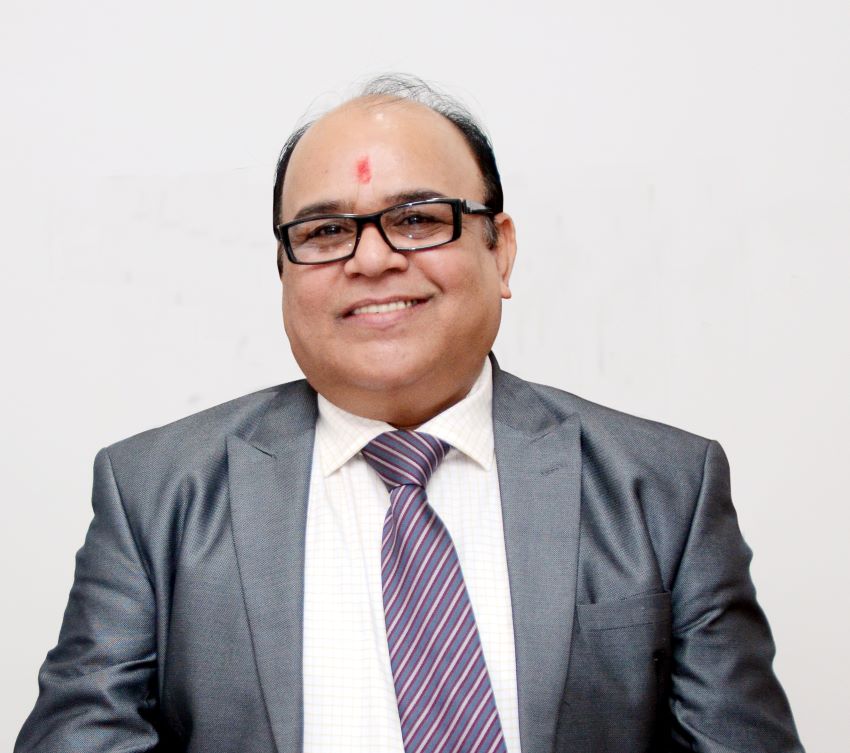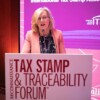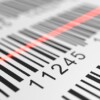
Interview with an ITSA Member – Uflex
18 Dec 2023 | Interviews, Press Releases
This month, we are pleased to present the latest entry in our ongoing interview series exploring the professional perspectives of International Tax Stamp Association (ITSA) members.
Our interview this month is with Mr G P Pathak, Sr Vice President of Uflex Ltd’s Holography Division. Mr Pathak, with a background in chemistry, is currently enjoying his third decade of working within the packaging and security printing world.

Q: Please would you introduce your company?
A: Uflex Ltd is a total solution provider of flexible packaging and a pioneer in holographic security printing solutions. We have a global presence, and a team of around 14,000 staff.
Besides offering products and services to the flexible packaging industry, the holography division also provides holographic and non-holographic secure authentication, identification and traceability solutions and services. Our presence extends to various sectors and markets, including packaging, textiles, pharmaceuticals and healthcare, distilleries, chemicals, machinery, security holographic labels, and security holograms for brand protection and identity documents.
Q: What makes your company stand out?
A: We are especially proud of our truly multinational nature and bring this wealth of experience to driving technological advances in packaging and its related services. Our many team members have a wide range of verticals that support us in pursuing constant innovation, with customised solutions such as Fresnel and holographic lenses, unigrams, micro and nano text, plus holographic variable QR codes helping to ensure our customers can stay a step ahead of counterfeiters.
Q: What role does your company play in the tax stamp industry?
A: We position ourselves as a pioneer in flexible packaging, machinery, chemicals, cylinders, flexo plates and holographic security products, offering a full range of solutions through our novel products and services. We are now applying this experience and expertise to tax stamps, which sit well within our work on custom security holographic products.
Q: What do you think is the most interesting aspect of tax stamps and/or the industry?
A: In my opinion, the integration of technologies from raw material to design and from design to digital solutions can create miracles, and tax stamps offer the perfect opportunity to integrate all of these.
I appreciate working within a company and industry that is outward-looking, focused on innovation that can have a positive impact from local communities right up to the national level and even beyond, with international cooperation on initiatives such as anti-counterfeiting.
Q: What changes have you seen to the tax stamp industry during your time working in it?
A: Back in the 1980s, tax stamps were simply a glassine paper. Around the beginning of the 2000s, a new era of revolution began and we saw the birth of an industry that – while relatively new – has already experienced immense growth, creativity and sovereignty.
The effectiveness and application of tax stamps cannot be ignored. Today, many countries are implementing tax stamps in many applications, and we’re seeing more complex and robust systems and regulations put in place. Countries such as Oman, for example, are among the latest nations to introduce tax stamps. For those who have been using them longer, we’re seeing escalation in the range of products under the tax stamp umbrella.
Nowadays, you can see examples of implementation in cosmetics, pharmaceuticals, the tobacco and liquor industries, the automotive sector, electronics spare parts, food industries… There are huge opportunities for the authentication and certification of a wide range of goods and documents.
Q: What changes do you envisage happening within the industry in future?
A: We are already seeing a trend in moving from older styles of tax stamp towards more modern and sophisticated ones. For example, tax stamps that combine holographic effects with track and trace systems are next to impossible to convincingly counterfeit. In the past, authorities would just procure a printed lot of stamps they would distribute to the industry, and this presented far more opportunities for counterfeiting.
Another trend I anticipate will continue is the rise in information tax stamps can convey, supporting businesses and consumers in quickly and easily confirming the authenticity of a given product. As new technologies are constantly being developed, I see tax stamps becoming ever-more creative and robust in terms of security and usability.
Q: What is one change to tax stamps or the industry you would like to see?
A: I would love to see more countries adopt holographic security printing in conjunction with track and trace guidelines. The strength of these measures in combination is an important step for the industry, and I believe we need a real commitment to WHO guidelines, seeing them rapidly adopted and strictly followed. It is ultimately incumbent upon governments to ensure the enforcement of these systems if they are to succeed, so I hope to see this obligation widely recognised and acted on.
Q: What do you see as the main challenges within the industry today?
A: While different countries naturally have their own specific challenges, I would say that the common issues relate to alcohol, tobacco, pharmaceuticals, and document authentication. These will be top of the list for most regions.
In India, illegal smuggling and counterfeiting cost our treasury trillions of rupees a year in lost revenue, and the price is not just paid by governments. Drinks manufacturers can see their brands tarnished and their revenues reduced thanks to sub-par quality counterfeits of their products.
Day by day, more industries are adopting and incorporating new technologies related to tax stamps, but we still need more countries to come forward, follow WHO protocols, and join hands with others in producing the most innovative and effective products and techniques to fight illicit trade of tobacco and alcohol.
Q: Why do you think the development of standards is important for the industry?
A: As I’ve emphasised, tax stamps are key to ensuring the best anti-counterfeiting solutions and traceability for a product, and standards help to harmonise the various technologies available, ultimately making counterfeiting extremely challenging and less rewarding. They also ensure the quality, safety, and reliability of tax stamps reach the highest levels.
The technical support served by ITSA to the tax stamp industry is especially commendable. ISO 22382:2018 provides procedures, rules and guidelines that are crucial for revenue authorities wishing to implement tax stamp programmes, and it has been exquisitely enabled and promoted by ITSA.







